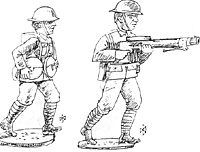 The glossy new Royal Amouries Journal is a bi-annual publication, managed out-of-house by the Publishing firm Maney of Leeds. It costs £20 per annum for individuals ($32 US),and £56 ($90 US) for institutions, ISSN 1741-6124, and can be ordered online at www.maney.co.uk
The glossy new Royal Amouries Journal is a bi-annual publication, managed out-of-house by the Publishing firm Maney of Leeds. It costs £20 per annum for individuals ($32 US),and £56 ($90 US) for institutions, ISSN 1741-6124, and can be ordered online at www.maney.co.uk
It will also be 'on the shelves' at Fort Nelson, Leeds, the Tower, and other sites, I'm told.
The first issue, Volume I, Number 1, is almost entirely written by current Royal Armouries staff: which is not all surprising! It ranges far across the centuries, from Napoleonic cavalry sabres, Firearms from the Indian Sub Continent, ECW 'Harquebusier's' pot helmets, WWI grenades et al. Well illustrated. and well written in every case. There's a short article on my favourite weapon the Trebuchet, introduced into England in 1217 AD at the Siege of Dover, and another on the diplomatic exchange of gifts of armour with Japan in the 16th/17th centuries.
The Journal is certain to become important to historians and researchers, just as the numerous Royal Armouries Monographs and Year books have proved to be. As a publication, this is worth wargamers keeping an eye on.
One article is of particularly fascination. 'Mr. Mills' grenade' by Martin Pegler deals with the development and use of the WWI Mills bomb and its precursor the imported Belgian 'Roland' grenade, providing valuable information to wargamers on what was certainly not always 100% reliable as a weapon of war! Two interesting comments recounted by Martin Pegler are worth noting here in 'Lone Warrior ‘.
According to a Private Jarman, the 7th Queens Regiments leading Scout/Bomber (what exactly was a 'Scout/Bomber'???), in Flanders in 1915 '...a good bomber was able to throw a Mills grenade 90 to 120 feet'. That's a fair range throw (potential bombers were inevitably asked if they played cricket, it seems), and the bomb itself weighed 1 lb 7 ozs, and was widely claimed it to be deadly within a radius of 20 yards from its explosion; though I for one was surprised at the very small charge of ammonal, cilferite or other explosive used. Only 2oz 2 drams in total! The huge total of 75 million Mills bombs were manufactured, and were turned out at 2.6 million a month after 19l5, and a version the type 36 remained in use until 1972.
Pegler also writes an amazing personal anecdote on the Mills bomb. Here it is, word for word................
"While in France some years ago, a local scrap merchant showed the author how he broke open Mills grenades so that the brass base plugs could be salvaged, and this was done by smashing them on flagstones. This explained why the scrap merchant had only one eye in a disfigured face and was missing three fingers. The author developed a sudden urge to be in a more distant part of France. "
Not a method, I would suspect, to appear in any field manual?
Bookcase
- The Coast Defense Journal Review
La Columna: Spanish Civil War Group Review
Arms and Armour: New Journal Review
Fighting in Normandy: German Army from D-Day to Villers Bocage Review
Current World Archeology Review
Health in Wargame Armies Review
Revista Ristre Napoleonico New Spanish Napoleonic Magazine Review
Medieval History Magazine Review
Back to Table of Contents -- Lone Warrior # 148
Back to Lone Warrior List of Issues
Back to MagWeb Magazine List
© Copyright 2004 by Solo Wargamers Association.
This article appears in MagWeb.com (Magazine Web) on the Internet World Wide Web.
Other articles from military history and related magazines are available at http://www.magweb.com
